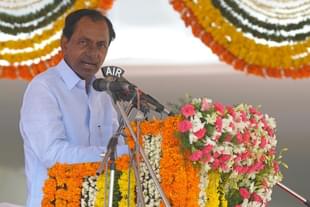Insta
Why Telangana’s Plan To Create 21 New, Smaller Districts Stands On Weak Ground
Swarajya Staff
Oct 10, 2016, 04:04 PM | Updated 04:04 PM IST
Save & read from anywhere!
Bookmark stories for easy access on any device or the Swarajya app.


Telangana Chief Minister K Chandrashekar Rao’s grand plan to create 21 new districts, and the speed at which his government has moved to execute this project, has shocked and awed many. If the state cabinet gives its approval today, these new districts will start functioning from tomorrow, the auspicious occasion of Vijayadashami.
KCR, as the chief minister is popularly called, believes that adopting the model of small districts will boost development and take administration closer to the people. “As and when the government comes out with a welfare scheme, there come middlemen to dilute the scheme and obstruct genuine beneficiaries from reaping the fruit. The small districts would help prevent such things,” The Hindu quoted him as saying.
The idea is to break down the existing districts into smaller ones – each with a population of not more than four lakh. This way, the district collectors, who manage the district administration, will be able to serve the people better.
But not everyone is willing to buy the reasoning or the intention behind the government’s move to create smaller districts. Some contend that this would put an unnecessary burden of thousands of crore on state exchequer, to setup offices, hire new staff and so on. Many simply doubt the state’s capacity to install so many officers, judges and policemen required to run a typical district in such quick time.
Some political opponents of the chief minister see it as a political move to give his party strongmen new fiefdoms to rule over. But KCR, on the other hand, contends that only those with a feudal mindset are objecting to the whole exercise. Taking a shot at the Congress party, he says, “We want to take the administration to people and do not want people to come to us unlike the Congress did.”
However, some of the criticism is genuine. Having proper infrastructure and hiring new officers and other necessary officials are critical to running these new districts efficiently. But the government seems to have put little thought in ramping up the state’s capacity. Without having these in place, it isn’t hard to see how good governance will remain elusive.
Small districts, like small states, can certainly prove to be good models of governance, but without proper planning and preparation, this new experiment stands exposed to vulnerabilities.




